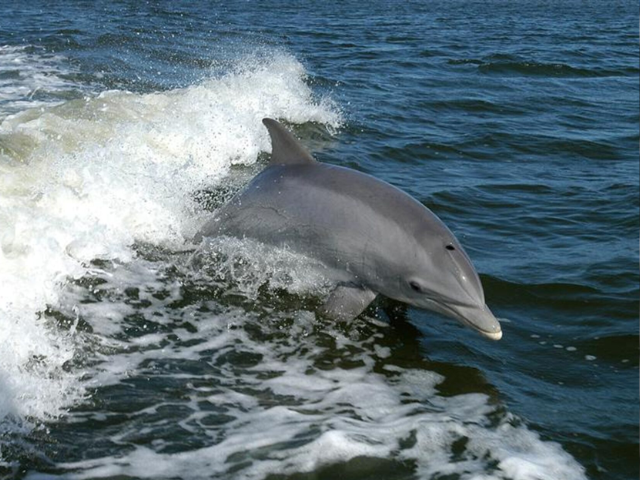
A new study has found traces of fentanyl in the blubber of dolphins in the Gulf of Mexico, highlighting the far-reaching impact of the ongoing fentanyl crisis on the environment.
Researchers at Texas A&M University-Corpus Christi detected the potent opioid in 30 common bottlenose dolphins across three Gulf locations, including Redfish Bay and Laguna Madre in Texas.
The study, titled Pharmaceuticals in the Blubber of Live Free-Swimming Common Bottlenose Dolphins, was recently accepted by the journal iScience.
Of the 89 dolphin blubber samples tested—83 from live dolphins and six from deceased dolphins—fentanyl was detected in 18 live dolphins and each of the deceased dolphins.
The findings suggest that pharmaceuticals, including fentanyl, are emerging micropollutants in the marine environment.
Researchers have raised concerns about the potential long-term effects of these substances on marine life.
"We did find one dead dolphin in Baffin Bay in South Texas within one year of the largest liquid fentanyl drug bust in US history in the adjacent county," said Dr. Dara Orbach, assistant professor of marine biology at Texas A&M University-Corpus Christi and lead investigator of the study.
"This points to the possibility of fentanyl being an ongoing issue in the marine environment."
Samples taken from dolphins in areas with higher pollution risks, such as oil spills, vessel traffic, and algal blooms, showed elevated levels of pharmaceuticals.
These dolphins were found to have more contaminants in their blubber, suggesting that environmental factors may exacerbate the issue.
Dr. Orbach noted that pharmaceuticals, including fentanyl, have been increasingly reported as pollutants in freshwater and marine ecosystems globally.
Dolphins, with their lipid-rich blubber, are often used as bioindicators for ecosystem health.
"Dolphins are particularly sensitive to environmental contaminants, which can be stored in their blubber, making them ideal subjects for monitoring pollutants," she explained.
While the precise route by which fentanyl enters the dolphins' systems remains unclear, Orbach emphasised the need for further research.
"Our research team emphasises the need for proactive monitoring of emerging contaminants, especially in regions with large human populations and major fishing or aquaculture industries."
The study also points to the significance of understanding how such contaminants affect marine mammals in the long run.
The impact of fentanyl on these animals, and its presence in the ecosystem, underscores a pressing need for further investigation into the sources and effects of pharmaceuticals in the environment.
Bottlenose dolphins, the most common of the 26 species of whales and dolphins found along the Texas coast, are widespread in tropical and temperate waters, including the Gulf of Mexico.
They are commonly found in coastal areas from New England to Florida, the Caribbean, and even parts of South America.




1736510783-0/fizza-(8)1736510783-0-165x106.webp)

1736511575-0/Untitled-design-(8)1736511575-0-270x192.webp)
1736495887-0/sidra--(63)1736495887-0-270x192.webp)
1736510606-0/sidra--(75)1736510606-0-270x192.webp)

1736499550-0/sidra--(66)1736499550-0-270x192.webp)

1730093451-0/Copy-of-Untitled-(1)1730093451-0-270x192.webp)



1736332856-0/Untitled-design-(20)1736332856-0-270x192.webp)



1736334465-0/sidra--(45)1736334465-0-270x192.webp)






COMMENTS
Comments are moderated and generally will be posted if they are on-topic and not abusive.
For more information, please see our Comments FAQ